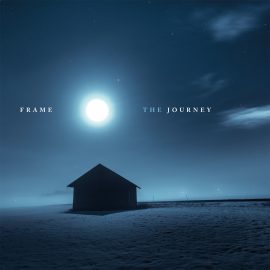Throughout the last decade of writing about music, I have made a few references to my meditation practice. In turn, people who share my views on this study of self-introspection, have asked about my recommendations on music to go with their sessions. This article is intended to capture my thoughts on meditation and music so that I can share them with you in a cohesive way. In particular, this piece focuses on a singular type of meditation, called Vipassanā in Pāli, also known as insight meditation, which is focused on gaining the wisdom of the true nature of reality. I am familiar with other forms of meditation, including the transcendental movement focusing on silent mantras, the loving-kindness Mettā meditation, as well as breathing, yoga, and movement techniques like Qigong, however, for the purpose of this write-up I would prefer to focus strictly on Vipassanā, as it is part of my daily practice and is fully integrated into my life.
Those interested in minimal music, particularly isolationist ambience and reductionist microsound, can immediately see the overlap of those slow evolving sonic textures and their potential incorporation into a daily practice. It seems appropriate to create a relaxed setting, lower the lights, put on your favourite album, place yourself in a comfortable position, and float away for a quarter of an hour or more. There is unquestionably something beautiful and more importantly calm about these sounds that let the mind rest in between, unaffected by any external influences. In many ambient pieces, the slow ebb and flow of the sound waves can be even likened to that of a soothing ocean, and even your breath. It’s easy to get lost in these multiple layers, discovering new intricate weaves you have not heard before. And here lies my word of caution.
When meditating with music try to remember the purpose behind your session in the first place. What you are asked to try and focus on is the present moment, to be with things how they really are, free from the judgement of those pleasant or unpleasant experiences, allowing the sounds to come as they are. In allowing the ambient music to be part of your practice be careful in not getting caught up with it. Remember, that just because you are not lost in your own thoughts, and are now focused on music, you’re still clinging to the desire of not being here and now. In other words, the desire to make things more pleasant with music, is still a desire, instead of accepting your current environment as it is. Focusing your attention on music, where your mind tends to dissect and follow its intricacies can still be a distraction, another form of escapism, another place to be in your mind.
Instead, try to use the sounds as yet another anchor. Just like your breath is always there to remind you to return back into the moment, or the feeling of your body resting on the floor is there to bring back your attention, you can use the ever-changing music more as a soft prompt to accept things as they really are, to not attempt and push back those thoughts, to not maintain the fantasy which your mind is constantly constructing, or judge yourself when you acknowledge that you have drifted once again… but to simply allow yourself to be, and gently come back into the present moment. If you find yourself departing with the music, sailing away into some colourful spaciousness or soaring up into an empty void, I would actually recommend for you to turn the music off, and simply sit there, in pure silence.
That being said, allow me to recommend a few selections that could potentially enhance your practice. To start off, let me suggest a few mixes which I have meticulously constructed for my own purpose. The series is called Residuum, and features my personal selections with a slow evolving crossover between the tracks. The second place to look in is the annual Best of the Year selection in the appropriately titled Music For Bending Light And Stopping Time list. You will find plenty of beauties there (although, not all may be suited for your needs, some may contain distortion and even noise, so please first explore these off-line). And finally, here are more specific recommendations, but, instead of individual artists or their albums, I will refer to the entire labels that can assist in this experience, and let you wander on your own.
Without a doubt anything that comes out on the Taylor Deupree’s beloved 12k raises to the top of my suggested labels, followed by [in no particular order] Richard Chartier’s LINE, Yann Novak’s Dragon’s Eye, Lawrence English’s Room40, Ian Hawgood’s Home Normal, Fabio Perletta’s Farmacia901, Kate Carr’s Flaming Pines, William Basinski’s 2062, and Celer’s Two Acorns. You will also find some gorgeous music on Glacial Movements, Oktaf, Dronarivm, Touch, Important, 3six, and Experimedia. Yes, I’ve said too much already, but if you can find the time (no pun intended), I’d recommend that you consume it all. I hope that these words will help you (feel free to submit your comments below) and I wish you luck on your self-guided journey. And if you haven’t tried Vipassanā yourself, I hope these words will inspire you to try and see for yourself. Ehipassiko!
~HC















